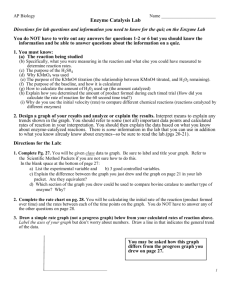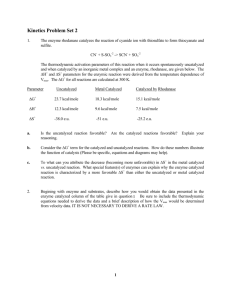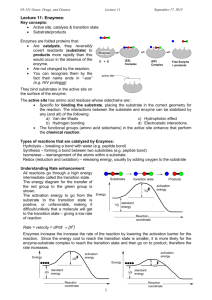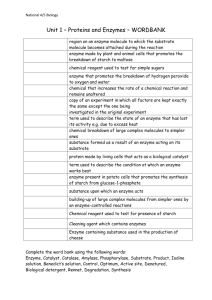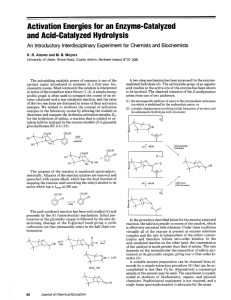B) Effect of temp. on enzyme catalyzed reaction
advertisement
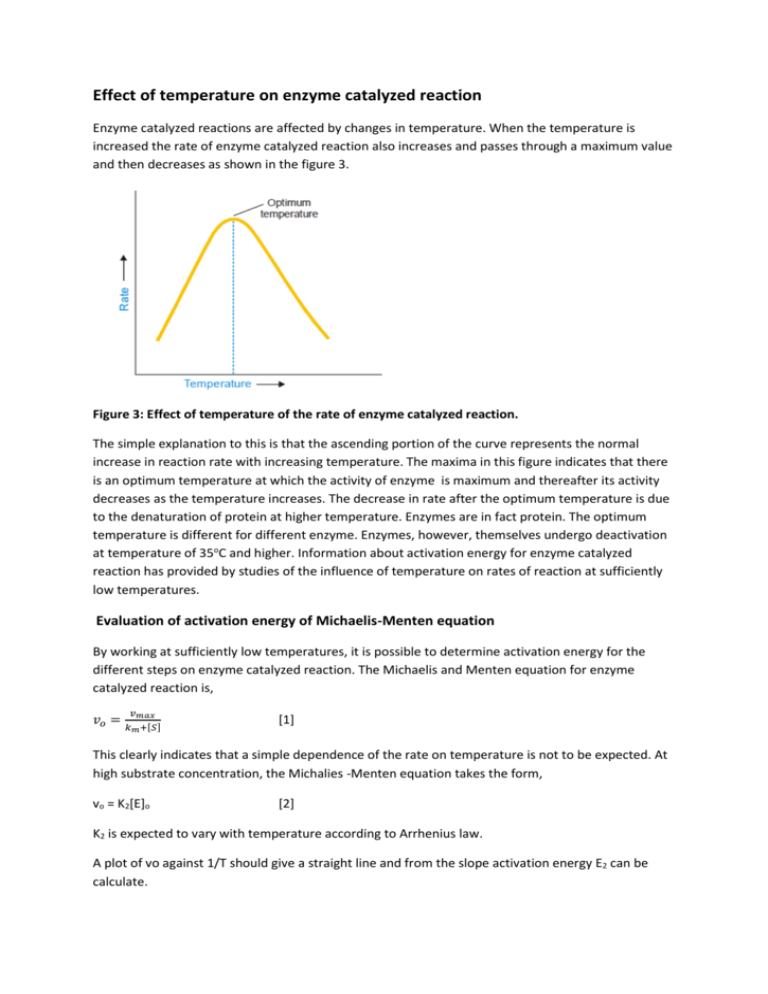
Effect of temperature on enzyme catalyzed reaction Enzyme catalyzed reactions are affected by changes in temperature. When the temperature is increased the rate of enzyme catalyzed reaction also increases and passes through a maximum value and then decreases as shown in the figure 3. Figure 3: Effect of temperature of the rate of enzyme catalyzed reaction. The simple explanation to this is that the ascending portion of the curve represents the normal increase in reaction rate with increasing temperature. The maxima in this figure indicates that there is an optimum temperature at which the activity of enzyme is maximum and thereafter its activity decreases as the temperature increases. The decrease in rate after the optimum temperature is due to the denaturation of protein at higher temperature. Enzymes are in fact protein. The optimum temperature is different for different enzyme. Enzymes, however, themselves undergo deactivation at temperature of 35oC and higher. Information about activation energy for enzyme catalyzed reaction has provided by studies of the influence of temperature on rates of reaction at sufficiently low temperatures. Evaluation of activation energy of Michaelis-Menten equation By working at sufficiently low temperatures, it is possible to determine activation energy for the different steps on enzyme catalyzed reaction. The Michaelis and Menten equation for enzyme catalyzed reaction is, 𝑣𝑚𝑎𝑥 𝑚 +[𝑆] 𝑣𝑜 = 𝑘 [1] This clearly indicates that a simple dependence of the rate on temperature is not to be expected. At high substrate concentration, the Michalies -Menten equation takes the form, vo = K2[E]o [2] K2 is expected to vary with temperature according to Arrhenius law. A plot of vo against 1/T should give a straight line and from the slope activation energy E2 can be calculate. At low substrate concentration, the Michaelis-Menten equation takes the form, 𝑣𝑜 = 𝑘 𝑘1 𝑘2 −1 +𝑘2 [𝐸]𝑂 [𝑆] [3] This equation clearly indicates that a simple temperature dependence of rate of reaction should not be expected. On the special case, when k2 > k-1, the above equation takes the form, vo = k1[E]o[S] [4] Under such conditions, according to the equation 4, from the plot of log vo against 1/T, one can evaluate the activation energy that will corresponds to E1. If on the other hand, k-1 >> k2 the equation 3 takes the form, 𝑣= 𝑘1 𝑘2 [𝐸]𝑂 [𝑆] 𝑘−1 [5] According to this equation 5, if log v against 1/T is plotted a straight line will be obtained and from such plot activation energy corresponding to E1 + E2 – E-1 can be evaluated. Thus by algebraic manipulation of activation energies calculated at different conditions, the activation energy for each of the steps of Michaelis-Menten reaction can be calculated.
